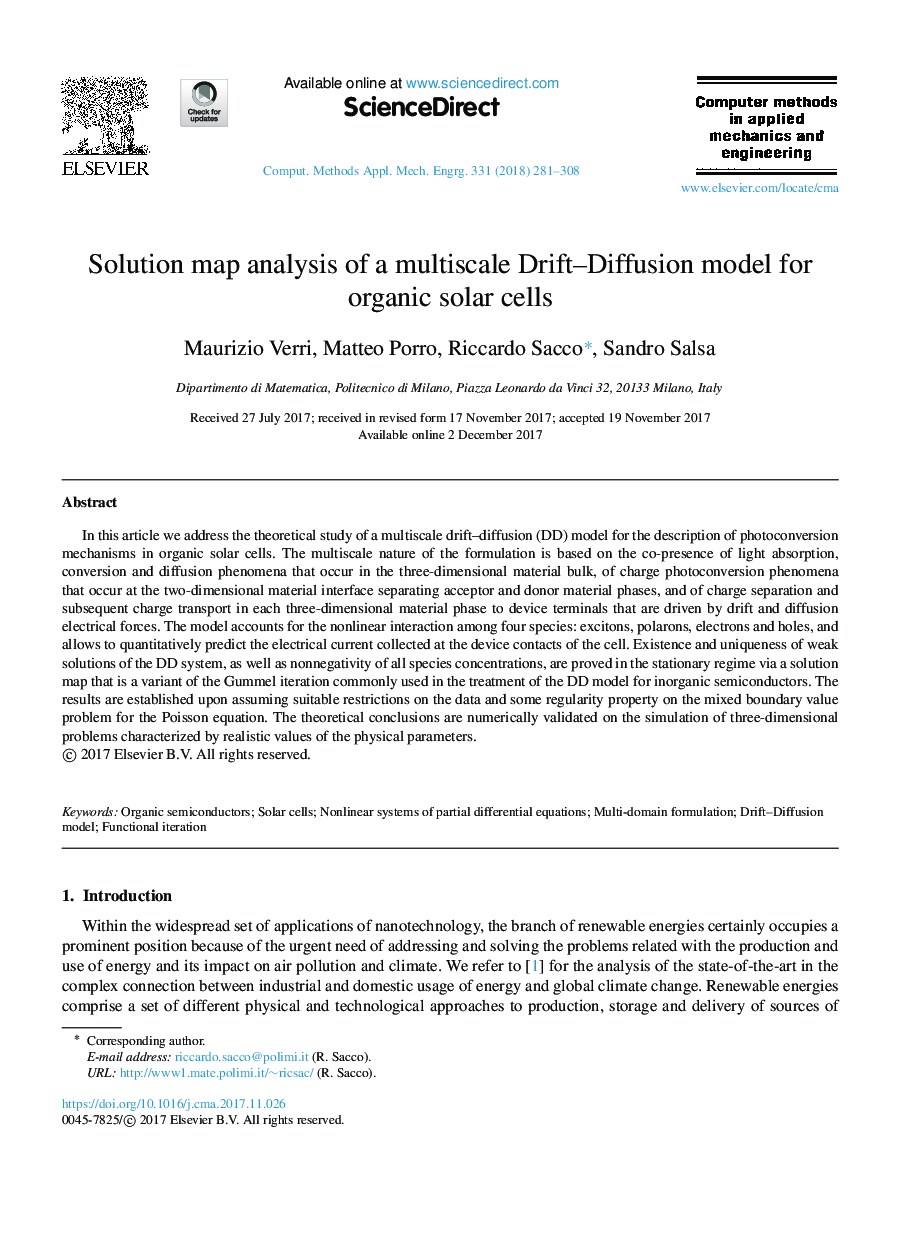| Article ID | Journal | Published Year | Pages | File Type |
|---|---|---|---|---|
| 6915645 | Computer Methods in Applied Mechanics and Engineering | 2018 | 28 Pages |
Abstract
In this article we address the theoretical study of a multiscale drift-diffusion (DD) model for the description of photoconversion mechanisms in organic solar cells. The multiscale nature of the formulation is based on the co-presence of light absorption, conversion and diffusion phenomena that occur in the three-dimensional material bulk, of charge photoconversion phenomena that occur at the two-dimensional material interface separating acceptor and donor material phases, and of charge separation and subsequent charge transport in each three-dimensional material phase to device terminals that are driven by drift and diffusion electrical forces. The model accounts for the nonlinear interaction among four species: excitons, polarons, electrons and holes, and allows to quantitatively predict the electrical current collected at the device contacts of the cell. Existence and uniqueness of weak solutions of the DD system, as well as nonnegativity of all species concentrations, are proved in the stationary regime via a solution map that is a variant of the Gummel iteration commonly used in the treatment of the DD model for inorganic semiconductors. The results are established upon assuming suitable restrictions on the data and some regularity property on the mixed boundary value problem for the Poisson equation. The theoretical conclusions are numerically validated on the simulation of three-dimensional problems characterized by realistic values of the physical parameters.
Related Topics
Physical Sciences and Engineering
Computer Science
Computer Science Applications
Authors
Maurizio Verri, Matteo Porro, Riccardo Sacco, Sandro Salsa,
